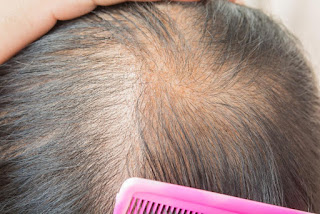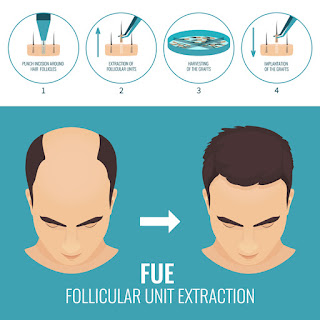Causes and Treatments for Thinning Hair
As people get older, their hair may start to lose volume and thickness. In some cases, thinning hair is linked with diet, nutrient deficiencies, or hereditary hair loss.
In most cases, thinning hair is not linked with overall health concerns. However, it can affect people’s mental health and self-esteem.
People can try several treatments and home remedies to boost hair health, thickness, and strength.
In this article, we look at the causes of thinning hair, as well as some of the treatments and home remedies available.
Causes of Hair Loss
Some degree of hair loss is normal. As people get older, their hair may naturally start to lose volume and strength.
The American Academy of Dermatology (AAD) point out that people lose 50–100 hairs each day. New hair then regrows from the same hair follicles.
Over time, however, some follicles stop producing hair, and hair shafts become finer. The hair also starts to lose its color.
If a person notices significant hair thinning or the development of bald patches, they may be experiencing hair loss. According to the ADD, people can stop or treat most causes of hair loss.
The following sections look at possible causes of thinning hair.
Male or female pattern hair loss
Male pattern baldness and female pattern baldness are together called androgenetic alopecia. Genes and hormones cause androgenetic alopecia.
Androgenetic alopecia is a frequent cause of hair loss. It affects an estimated 50 million men and 30 million women in the United States.
According to the Genetics Home Reference, the likelihood of experiencing androgenetic alopecia increases with age. Although it can affect teenagers, over half of males aged 50 and older have some degree of hair loss treatment. It is most likely to affect females following menopause.
Often, people who have androgenetic alopecia have family members with the same condition.
In males, hair thinning tends to occur from the hairline to the back of the head. In females, it tends to affect the crown of the head.
Alopecia Areata
Alopecia areata is a condition that causes hair loss in round patches on the scalp. It can also affect the eyebrows, beard, and other areas where hair is present.
People in the U.S. have a 2.1% chance of developing alopecia areata in their lifetime. It often occurs during childhood. Genes and environmental factors are the main causes.
In alopecia areata, the hair follicles are still alive, and the hair can regrow. Doctors may treat alopecia areata with an injection into the scalp every 4–6 weeks for up to 6 months.
Diet
The body needs nutrients in order to create new hair strands and maintain healthy hair follicles.
Protein is an essential component of hair. Micronutrients, which include vitamins and minerals, play a key role in the hair follicle growth cycle.
Malnutrition and vitamin deficiencies can cause hair loss. Eating a healthful, varied diet can help promote the continued growth of strong, healthy hair.
Eating a nutritious diet can also prevent the following signs of damaged hair:
In most cases, thinning hair is not linked with overall health concerns. However, it can affect people’s mental health and self-esteem.
People can try several treatments and home remedies to boost hair health, thickness, and strength.
In this article, we look at the causes of thinning hair, as well as some of the treatments and home remedies available.
Causes of Hair Loss
Some degree of hair loss is normal. As people get older, their hair may naturally start to lose volume and strength.
The American Academy of Dermatology (AAD) point out that people lose 50–100 hairs each day. New hair then regrows from the same hair follicles.
Over time, however, some follicles stop producing hair, and hair shafts become finer. The hair also starts to lose its color.
If a person notices significant hair thinning or the development of bald patches, they may be experiencing hair loss. According to the ADD, people can stop or treat most causes of hair loss.
The following sections look at possible causes of thinning hair.
Male or female pattern hair loss
Male pattern baldness and female pattern baldness are together called androgenetic alopecia. Genes and hormones cause androgenetic alopecia.
Androgenetic alopecia is a frequent cause of hair loss. It affects an estimated 50 million men and 30 million women in the United States.
According to the Genetics Home Reference, the likelihood of experiencing androgenetic alopecia increases with age. Although it can affect teenagers, over half of males aged 50 and older have some degree of hair loss treatment. It is most likely to affect females following menopause.
Often, people who have androgenetic alopecia have family members with the same condition.
In males, hair thinning tends to occur from the hairline to the back of the head. In females, it tends to affect the crown of the head.
Alopecia Areata
Alopecia areata is a condition that causes hair loss in round patches on the scalp. It can also affect the eyebrows, beard, and other areas where hair is present.
People in the U.S. have a 2.1% chance of developing alopecia areata in their lifetime. It often occurs during childhood. Genes and environmental factors are the main causes.
In alopecia areata, the hair follicles are still alive, and the hair can regrow. Doctors may treat alopecia areata with an injection into the scalp every 4–6 weeks for up to 6 months.
Diet
The body needs nutrients in order to create new hair strands and maintain healthy hair follicles.
Protein is an essential component of hair. Micronutrients, which include vitamins and minerals, play a key role in the hair follicle growth cycle.
Malnutrition and vitamin deficiencies can cause hair loss. Eating a healthful, varied diet can help promote the continued growth of strong, healthy hair.
Eating a nutritious diet can also prevent the following signs of damaged hair:
- brittle hair shafts
- a dull appearance
- dryness
- dandruff




Comments
Post a Comment